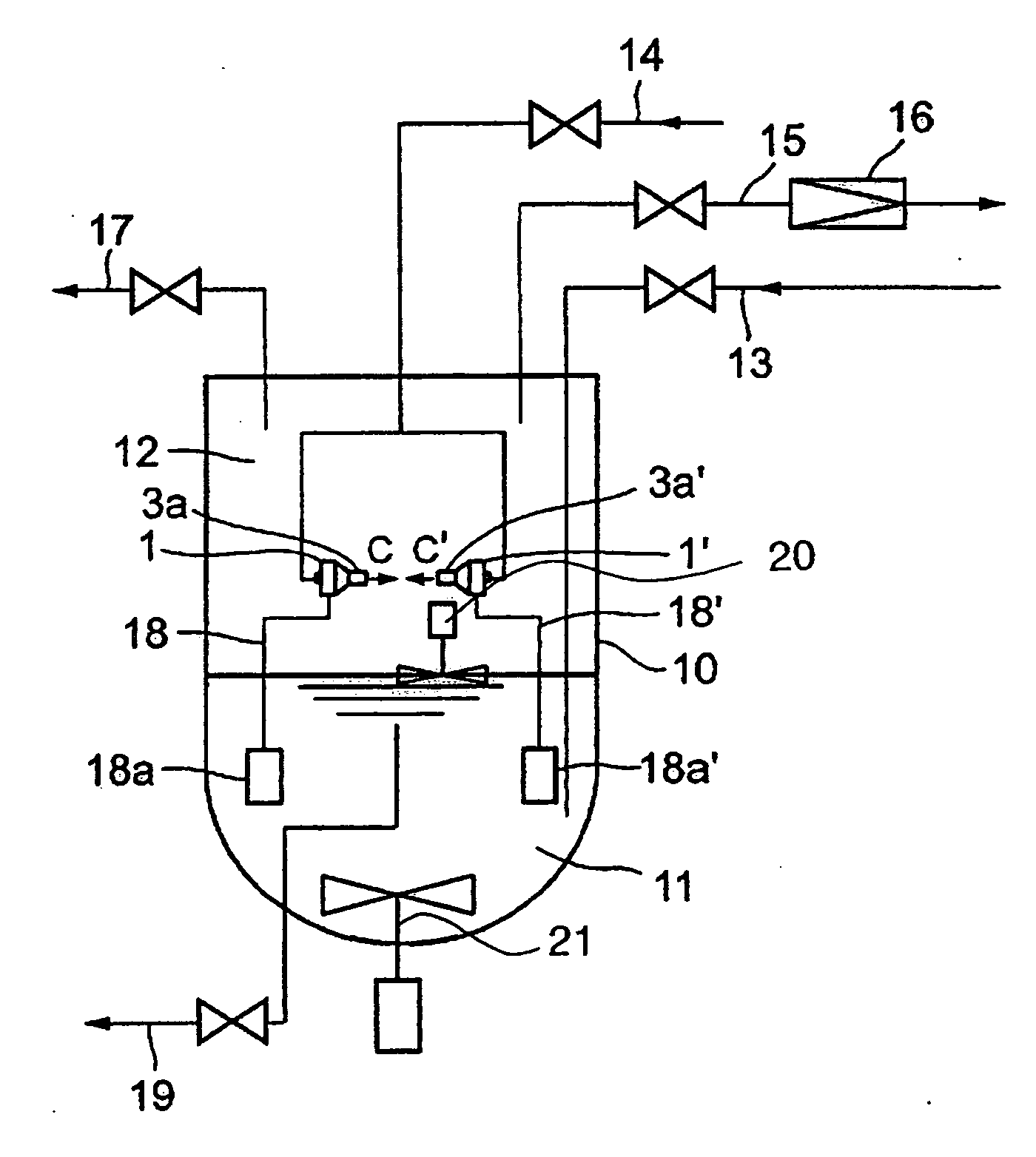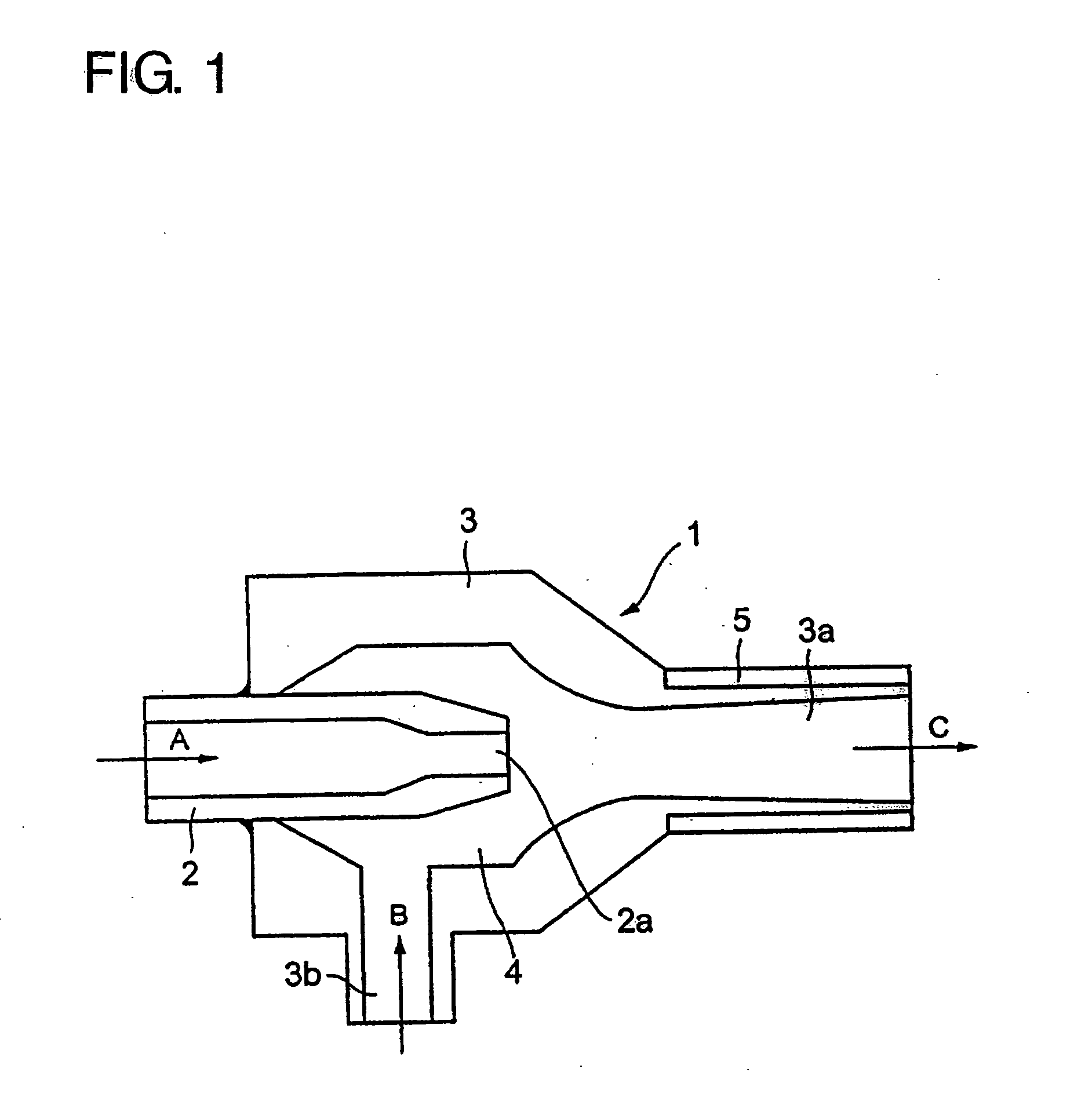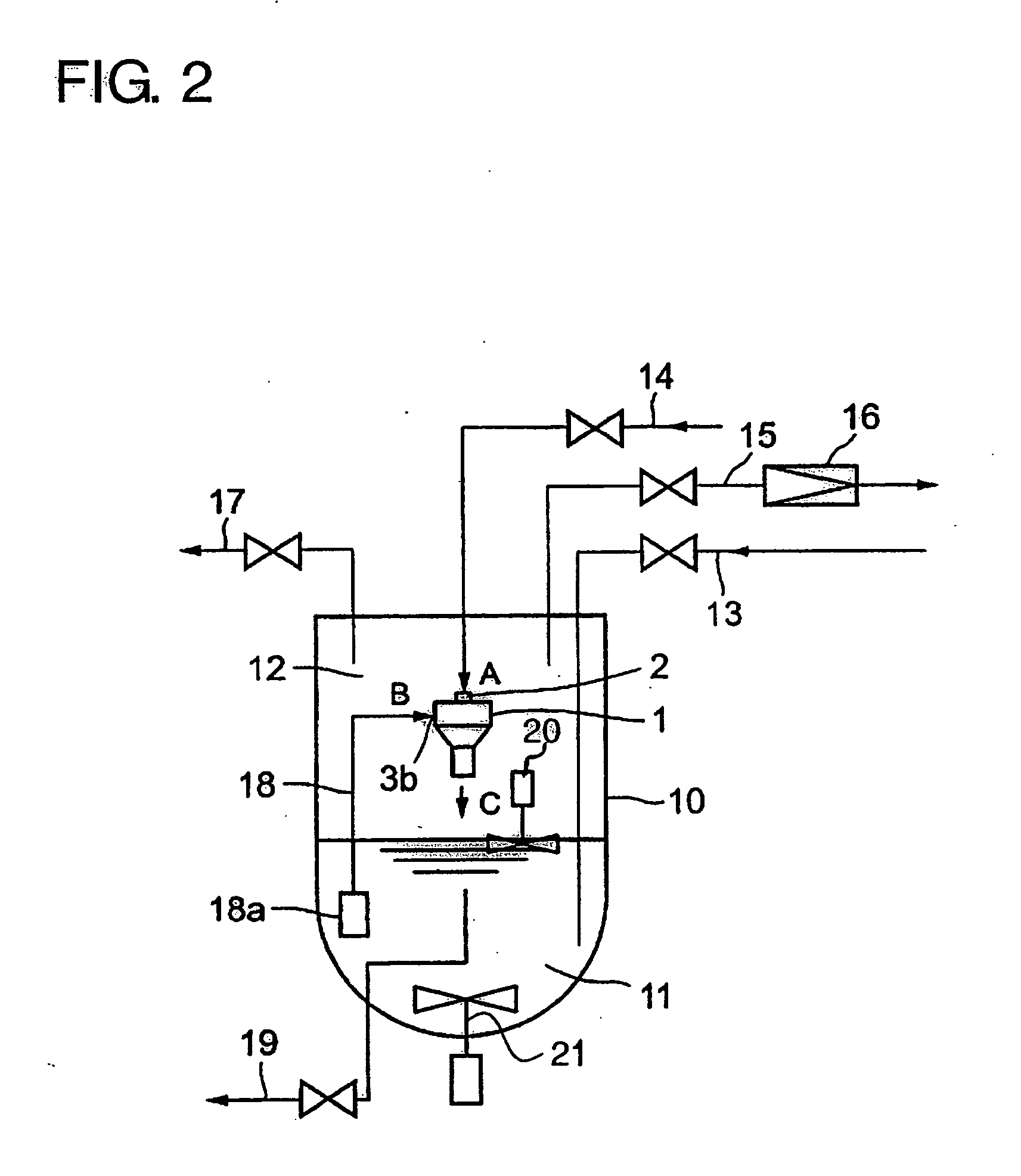Apparatus for producing slush nitrogen and method for producing the same
a technology of slush nitrogen and apparatus, which is applied in the direction of lighting and heating apparatus, television systems, domestic cooling apparatus, etc., can solve the problems of uneven and large solid hydrogen particles, the method of economically producing slush nitrogen comprising solid nitrogen having a homogenous and fine particle size is not established, and the super conductive action can be kept stable, and the selection range of super conductive materials is broadened. , good heat conductive characteristics
- Summary
- Abstract
- Description
- Claims
- Application Information
AI Technical Summary
Benefits of technology
Problems solved by technology
Method used
Image
Examples
first embodiment
A First Embodiment
[0073]FIG. 1 is a sectional view of an ejector disposed in a low temperature vessel. As shown in FIG. 1, an ejector 1 comprises a nozzle 2 and an outer cylinder 3 having a diffuser part 3a. The nozzle 2 is protruded into the inner space 4 of the outer cylinder 3. A cooling agent of liquid or gas is supplied as shown as an arrow A and blown out of a nozzle end 2a toward the diffuser part 3a. Liquid nitrogen filled in a low temperature vessel is sucked into the inner space 4 from a suction hole 3b of the outer cylinder 3 as shown as an arrow B and blown into an inner space of the low temperature vessel together with a cooling agent flow through the diffuser part 3a. A heater 5 is provided at the outside of the diffuser part 3a in order to prevent for solid nitrogen to be frozen and fixed thereto.
[0074]FIG. 2 is a drawing showing a piping of a low temperature vessel provided with an ejector. FIG. 3 is a drawing showing a case in which two ejectors are disposed face t...
second embodiment
A Second Embodiment
[0084]FIG. 5 is a schematic illustration of an apparatus of a second embodiment according to the present invention. In FIG. 5, 104 is an adiabatic vessel; 102 is liquid nitrogen held in the vessel; 109 is a vacuum pump for depressurizing a gaseous part (a means for depressurizing); 108 is a thermometer detectable of the triple point (a means for detecting temperature); 107 is a level gauge capable of finding a present value of the volume; 103 is a stirring blade for surface part capable of breaking a plate of solid nitrogen solidified on the surface (a means for stirring a part of liquid surface); 105 is a stirring blade for bottom part capable of further pulverizing sedimented solid nitrogen (a means for stirring a bottom part).
[0085] Liquid nitrogen 102 is stored in the adiabatic vessel 104 and a gaseous phase of the inner part of the vessel is depressurized with a vacuum pump 109. When depressurization proceeds, liquid nitrogen is evaporated and a temperature ...
third embodiment
A Third Embodiment
[0088] Next, an embodiment of evaluating slush nitrogen concentration is described. Let a latent heat of vaporization of nitrogen, a latent heat of solidification, a density of liquid nitrogen, a density of solid nitrogen, a volume of nitrogen at triple point, a volume of nitrogen after production of slush nitrogen, a liquid nitrogen corresponding value of a volume of vaporized nitrogen, a volume of vaporized solid nitrogen, a heat intruded into the adiabatic vessel, and a time consumed for production of slush nitrogen be Hv (kJ / kg), Hs (kJ / kg), M1 (kg / m3), Ms (kg / m3), Vs (m3), Vf (m3), Xv (m3), Xs (m3), Q (kW), and T (s) respectively,
from energy conservation law,
Hv×M1×Xv=Hs×Ms×Xs+Q×T (1)
from law of conservation of mass,
Vs×M1=(Vf−Xs)×M1+Xs×Ms+Xv×M1 (2).
[0089] Xv and Xs are found from the above simultaneous equations and the obtained values are substituted into the following equation to find a slush nitrogen concentration (IPF).
IPF=Xs×Ms / ((Vf−Xs)×M1+Xs×M...
PUM
| Property | Measurement | Unit |
|---|---|---|
| temperature | aaaaa | aaaaa |
| melting point | aaaaa | aaaaa |
| melting point | aaaaa | aaaaa |
Abstract
Description
Claims
Application Information
 Login to View More
Login to View More - R&D
- Intellectual Property
- Life Sciences
- Materials
- Tech Scout
- Unparalleled Data Quality
- Higher Quality Content
- 60% Fewer Hallucinations
Browse by: Latest US Patents, China's latest patents, Technical Efficacy Thesaurus, Application Domain, Technology Topic, Popular Technical Reports.
© 2025 PatSnap. All rights reserved.Legal|Privacy policy|Modern Slavery Act Transparency Statement|Sitemap|About US| Contact US: help@patsnap.com



